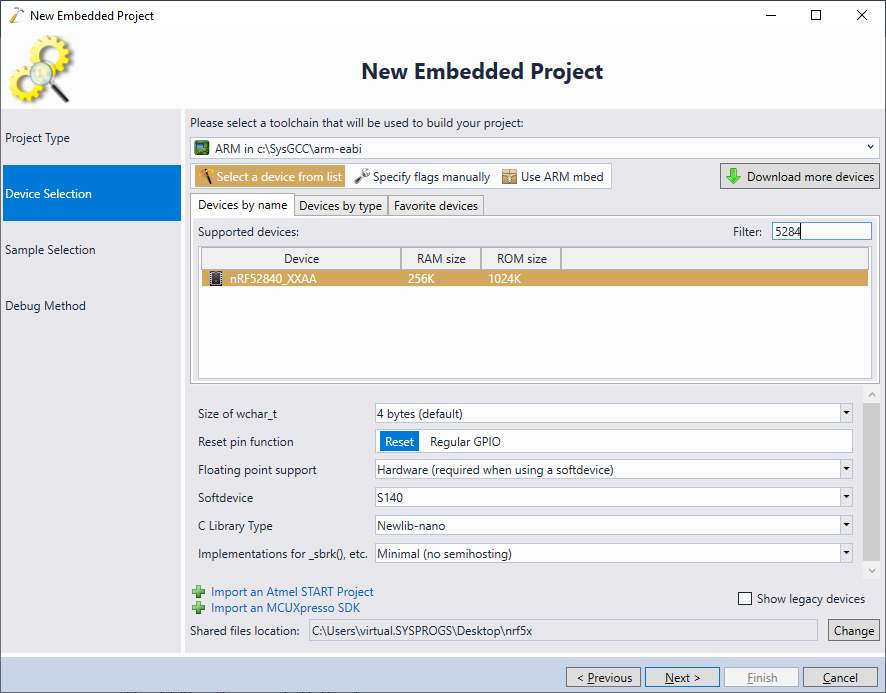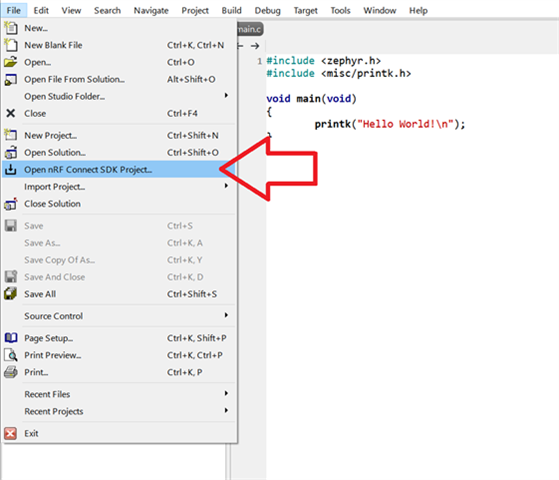
- SEGGER EMBEDDED STUDIO TUTORIAL HOW TO
- SEGGER EMBEDDED STUDIO TUTORIAL PATCH
- SEGGER EMBEDDED STUDIO TUTORIAL CODE
- SEGGER EMBEDDED STUDIO TUTORIAL PLUS
- SEGGER EMBEDDED STUDIO TUTORIAL PROFESSIONAL
SEGGER EMBEDDED STUDIO TUTORIAL CODE
It is available for unlimited evaluation, and for educational and non-commercial purposes, free of charge, with no restrictions in terms of code size, features or duration of use.Įmbedded Studio is used extensively at SEGGER internally and is continuously updated and enhanced. Fully integrated with J-Link, it delivers great performance and stability. The built-in debugger leaves nothing to be desired. In combination with the Clang-based, highly optimizing C/C++ SEGGER Compiler, extremely small yet efficient programs can be generated, putting every byte to work. Start SEGGER Embedded Studio for the first time by opening it from the start menu or through the installation directory. It also includes SEGGER’s highly optimized emRun runtime and emFloat floating point libraries, as well as SEGGER’s smart Linker, all of which have been developed from the ground up specifically for resource-constrained embedded systems. The editor is quick to start up and the build process is blazingly fast, saving precious working hours. It comes with a powerful project manager and source code editor.
SEGGER EMBEDDED STUDIO TUTORIAL PROFESSIONAL
Characterized by its flexibility of use, it includes all the tools & features a developer needs for professional embedded C and C++ programming & development. I tried to load the elf file in the environment and hence had no luck no flash or debug the STM32 target. I think the IDE is made for this purpose and does what it has to do for any plattform. About Embedded StudioĮmbedded Studio is a multi-platform IDE (Integrated Development Environment) from SEGGER Microcontroller. Nonetheless, I would prefer using Embedded Studio IDE for the same purpose (only debugging, flashing purposes). It adapts from the 20-pin 0.1” JTAG connector to a 19-pin 0.05” Samtec FTSH connector as defined by Arm.įor more information and tech specs, please check out the Segger items in the store.To support common embedded use cases even on resource-constrained targets, the C++ library is available in a “no-throw” configuration, avoiding overhead associated with exceptions.Įmbedded Studio also comes with the SEGGER Linker, which is optimized to keep C++ applications small by removing the code duplication frequently encountered with template libraries. The 19-Pin Cortex-M Adapter allows JTAG, SWD, and SWO connections between J-Link and Cortex-M based target hardware systems. Got the project ported over to Segger Embedded Studio, which turned out to be MUCH nicer (and faster) then using IAR EWARM, and also better then using. This allows custom connections/wiring between the 20-pin and 10-pin side.
SEGGER EMBEDDED STUDIO TUTORIAL PATCH
The 50-Mil 10-Pin Patch Adapter converts the standard 20 pin 0.1″ connector to the standard 10-pin 0.05″ Cortex-M connector. To connect the Portenta boards with J-Link debuggers, there are two adapters available: Segger’s 50-Mil 10-Pin Patch Adapter and J-Link 19-pin Cortex-M Adapter.
SEGGER EMBEDDED STUDIO TUTORIAL HOW TO
The videos will cover how to open your first. It’s been designed to allow students, educational facilities and hobbyists access to top of the line debug probe technology. In this tutorial series, we will walk you through the basics of using SEGGER Embedded Studio with the nRF5 SDK.
SEGGER EMBEDDED STUDIO TUTORIAL PLUS
J-LINK PLUS COMPACT: With this compact version of the J-Link PLUS, users have an unlimited number of flash breakpoints.Based on a 32-bit RISC CPU, it can communicate at high speed with supported target CPUs. J-LINK BASE COMPACT: USB powered JTAG debug probe supports a large number of CPU cores.There are four different J-Link models already available on the Arduino Store: Erich Styger recently posted a great tutorial on how to add console functionality using Single. Each window can be moved, re-sized and docked to fit every developer’s needs. Note: SEGGER Embedded Studio (SES) natively supports RTT. The user interface is highly intuitive, yet fully configurable.


Ozone includes all well-known debug controls and information windows, while making use of the best performance of J-Link debug probes. It can load applications built with any toolchain/IDE and even debug the target’s resident application without any source.

test the main features So this tutorial will put extra focus on modifying. Ozone supports the debugging of any embedded application on C/C++ source and assembly level. Blinky application 04: SEGGER Embedded Studio (0) 2018 my example is. Thanks to features such as trace, code profiling and code coverage analysis, it’s also an extremely powerful performance analyzer. Ozone is Segger’s full-featured graphical debugger for embedded systems.


 0 kommentar(er)
0 kommentar(er)
